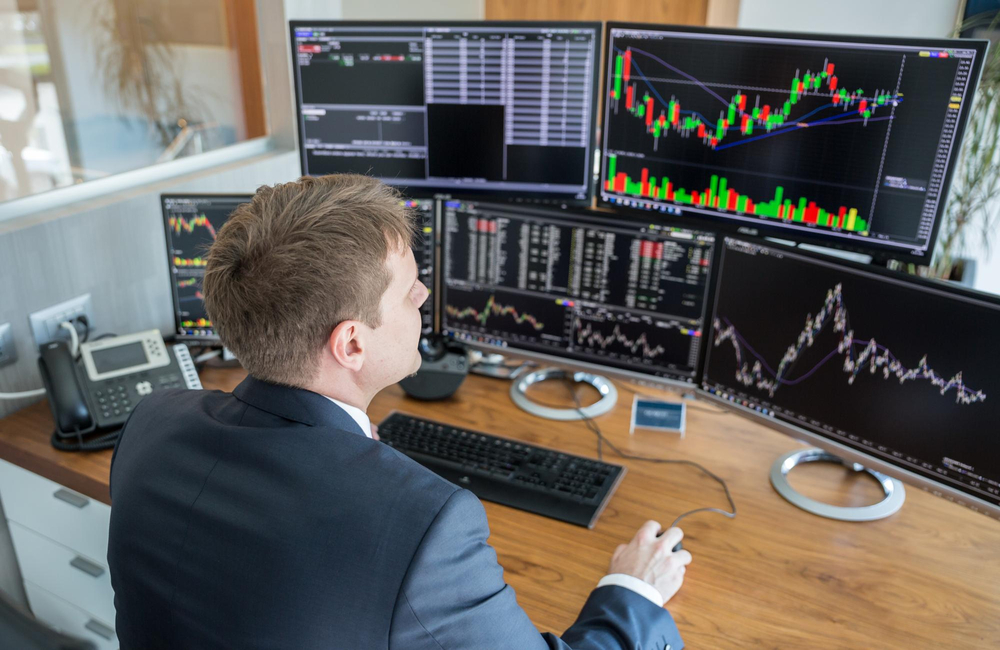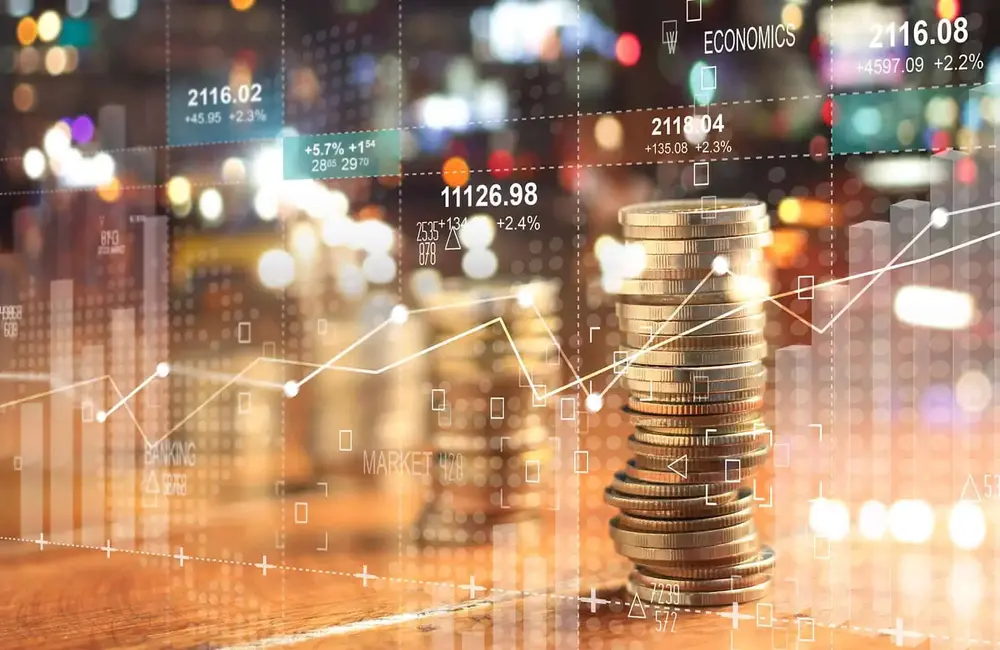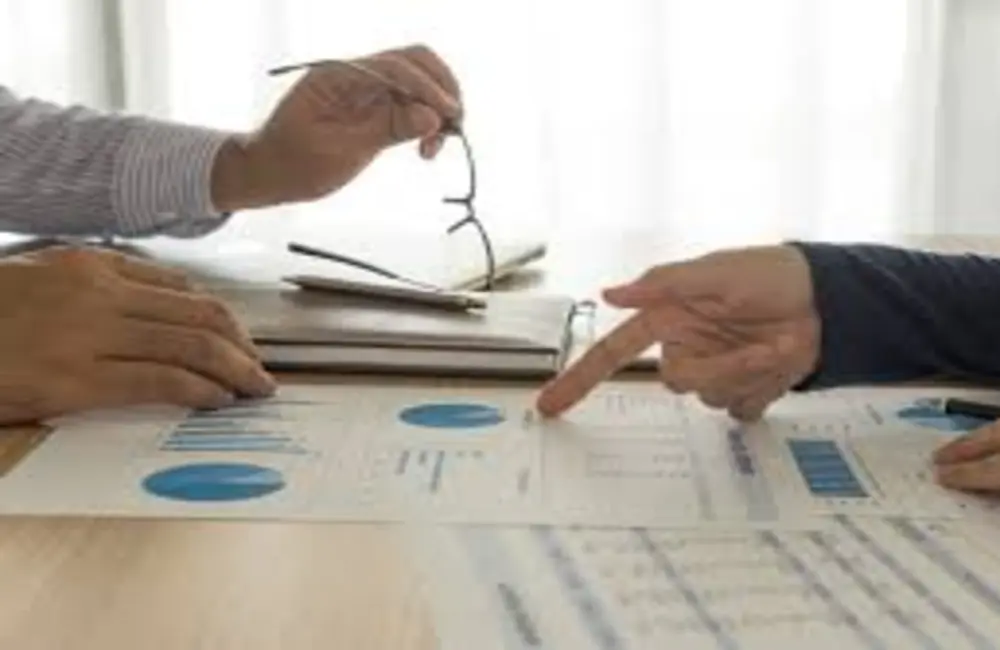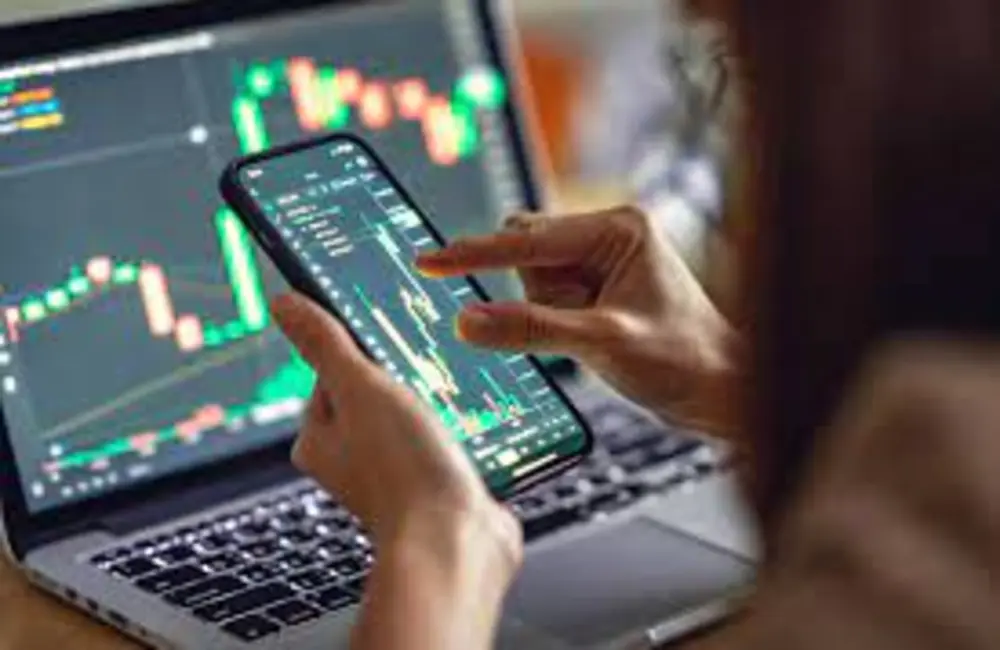ASX futures were 52 points or 0.8 per cent higher at 6775 at 8:00 am on Thursday, signaling a pop at the open.
Outside the United States, the stock market in the broad-based S&P 500 added 2.6 percent. The Dow Jones Industrial Average rose 1.4 percent. The Nasdaq Composite posted its biggest one-day percentage gain in more than two years, rising 4.1% on the back of reassuring full-year guidance from tech behemoth Microsoft.
The central bank raised its federal-funds rate by 0.75 percentage point, to a range between 2.25% and 2.5%, and in a statement all but vowed that it is “strongly committed to returning inflation to its 2% objective.” Jerome Powell, the chairman, said the pace of future increases could slow but added that the bank would refrain from providing explicit guidance as it had done before.
“At some point it will be time to take a step back. We may well do another highly unusual increase [in September] but that is no decision we’ve made at all, we’re going to take the data as it comes,” he said.
Powell also said he doesn’t believe the US is in a recession. “Two-point-seven million people are hired in the first half of the year. It doesn't add up to an economy that’s in recession.”
In the commodities space, Iron ore was up 0.2% to US$112.40, Brent crude oil was 3% higher to US$107.48 and gold added 0.1% to US$1737.50.
Local bond markets advanced following that softer-than-expected reading on Wednesday with the yield on 2 Year Australian governments slipping to 2.57% and that on 10 Year notes dropping to 3.24%. Overseas, the yield on the 2 Year US Treasury hit 3.00%, while the yield on the 10 Year US Treasury notes was down to 2.78%.
The Australian dollar lifted to 69.91 US cents compared to 69.38 US cents last night. The WSJ Dollar Index, which measures the U.S. currency against 16 others, fell to 98.35.
Asia
Chinese shares finished mixed, as declines among liquor makers were balanced out by gains by renewables and IT companies. Short-term market moves could be led by the impending US Fed decision and China Politburo meeting, Capital Securities wrote in its note. Index heavyweight Kweichow Moutai fell 1.6% and Wuliangye Yibin slid 1.5%, while iFlytek advanced 2.0% and surveillance-camera maker Hangzhou Hikvision gained 1.1%. In renewable-energy stocks, LONGi Green Energy rose 2.7% and Tongwei Co. gained 1.9%, although electric-car-battery maker CATL fell 1.3%. The Shanghai Composite Index fell 0.1% to 3275.76, while the Shenzhen Composite Index added 0.3%, and the ChiNext Price Index ended flat.
The Hong Kong market fell 1.1% to close at 20670.04, led lower by consumer shares on continued concerns about high inflation and recession risks. Other Asian stocks were mixed as investors looked to the US Fed rate decision later in the global day. Much will also depend on coronavirus-related news flow as people continue to worry about the rise in Chinese infection rates. ANTA Sports fell 3.4% and sportswear company Li Ning dropped 3.1% while garment maker Shenzhou International declined 2.2%. Bocom International ended flat after announcing it would establish a private equity fund to invest in new energy and biomedicine sectors.
The Nikkei Stock Average rebounded from early losses to finish 0.2% higher at 27715.75, helped by gains in transportation stocks. Central Japan Railway added 2.2%, West Japan Railway climbed 1.5% and East Japan Railway added 2.0%. Tokyo Gas declined 1.6% after lowering its FY forecast. Canon, the digital camera manufacturer, fell 1.0% as its 2Q net profit was below analysts' forecast. Capcom, a video game developer, eased 0.6% as its net profit in the first quarter decreased from a year earlier. Attention will likely be on corporate earnings and the US Fed rate decision in global day closing.
Europe
European markets were higher with the pan-European Stoxx Europe 600 and German DAX closing up 0.5%, and the French CAC 40 rising 0.8%.
London’s FTSE 100 closed 0.66pc higher on Wednesday as strong numbers from the likes of Lloyds Banking, Reckitt Benckiser, and Smurfit Kappa helped to lift the index to its highest point in six weeks.
Europe: European markets were generally higher Friday, benefiting from the more broad-based tech sector’s resilience in the wake of last night’s strong numbers courtesy of Microsoft Corp. and Google owner Alphabet Inc., says CMC Markets UK chief market analyst Michael Hewson.
Another 80 million cubic meters of gas may be in the southern pipeline, and further deliveries will be reduced because it could take weeks or months to fill up Nord Stream 1 and transit pipelines, he writes. RecognitionExceptionEuropean natural gas prices reach four-month highs as deliveries on the Nord Stream 1 are pulled back to 20% of capacity, Mr. Hewson says in a research note.
North America
Stocks in the United States rose Wednesday afternoon, continuing to build on gains from earlier in the day, after the Federal Reserve indicated that it would move aggressively to rein in inflation and the central bank’s chairman argued that the nation’s economy had not yet fallen into a recession.
The S&P 500 rose 2.6%. The Dow Jones Industrial Average rose 1.4 percent. The Nasdaq Composite posted its largest one-day percentage gain in more than two years, climbing 4.1 percent.
The Fed raised the federal-funds rate target 0.75 percentage point, to a range between 2.25% and 2.5%, and said in a statement that it is “strongly committed to returning inflation to its 2% objective.”
“The Fed is ready to do this until they have price stability and bring inflationary expectations lower,” said Quincy Krosby, chief equity strategist at LPL Financial. That’s what the market is looking for. There is still inflation and the question is how fast it is being reined back.
Asked by reporters, Mr. Powell said he doesn’t believe the U.S. is in a recession. “Two-point-seven million people were hired in the first half of the year it doesn’t really make sense for the economy to be in recession,” Mr. Powell said.
Stocks had moved higher earlier in the day, after mega-cap technology companies Microsoft and Google parent Alphabet reported earnings that were stronger than investors had feared.
“The market is positioned bearishly,” said Tim Leary, a high-yield bond portfolio manager at RBC Global Asset Management. "Trading volumes are way down. You smell a little bit of positive news, and it doesn’t take much to get a market rally.”
It is a momentous and busy week in financial markets, and traders all over the world were tuning into the Fed’s interest-rate decision.
Investors have been on the lookout for any signals from central bankers about the extent of further interest-rate increases this year and whether they anticipate reversing course and starting to cut rates before long.
Fed officials in a policy statement said they were aware of signs that the pace of economic activity had moderated. Mr. Powell said it would probably prove appropriate to hold off on raising interest rates.
The US stock market has actually done well on days when the Fed has raised rates this year, Bespoke Investment Group pointed out on Tuesday. Wednesday’s move was the third successive hike of a quarter-point this year and the second increase of 0.75 percentage point in a row. It has never raised rates that fast in its century-plus history.
“We want to hear what Powell is thinking about the inflation outlook and what he is thinking about the growth outlook,” said Seema Shah, chief global strategist at Principal Global Investors. "But we have to be careful. We’ve seen in the past two months that we cannot overinterpret any kind of broad direction.”
The yield on the benchmark 10-year United States Treasury note was 2.731 percent, compared with 2.786 percent on Tuesday. Bond prices fall as yields rise. The yield on the two-year note, by contrast, fell to 2.968 percent, from 3.041 percent the previous day.
Investors have bid up short-term yields this year in expectation that the Fed would continue to raise interest rates aggressively, leaving the United States Treasury yield curve inverted. That signal is widely viewed as an important indicator of recession.
Stocks are set to finish the month of July with gains, though many investors say they don’t believe those are sustainable.
“That doesn’t mean a recession won’t occur in the next couple of quarters,” Ms. Shah said. This is your mother-of-all bear-market rallies.
Investors have become more and more concerned the Fed will lead the country into recession with its tighter policy. The economy’s recent performance will come into view with second-quarter gross-domestic product data on Thursday.
Investors are also watching results this week that are the busiest of earnings season to glean an idea of how companies are dealing with decades-high inflation.
In Wednesday’s earnings, Shopify cautioned that it expects higher inflation and rates to squeeze consumers’ wallets, and added that the strength of the US dollar was a headwind for its results. The company posted a loss for the second quarter. The Wall Street Journal that the company is reducing its global workforce by 10%. Shopify surged $3.69, or 12 percent, to $35.24, a day after falling 14 percent.
Sherwin-Williams dropped $22.32, or 8.8 percent, to $231.97 after it reported a decline in profit as sales were lower than expected, as the paint and coating maker faced high raw-material costs.
Spotify shares rose $12.64, or 12 percent, to $116.61 after the music-streaming giant reported that user growth accelerated and that advertising revenue jumped during the second quarter.

























